
Saturdays, noon to 1 p.m. ET on WICR 88.7 FM.
Or stream audio live from anywhere on WICR Online!
You can listen to recent shows by clicking the podcast links below, or check out our extensive archive of past shows available as podcasts.
April 11, 2020
Foods of the pioneers
When you dig into questions of what Hoosiers ate in the 1820s, '30s and '40s, when they gathered for meals, the dining utensils they used, and related topics, you have a lot to savor.
Indianapolis-based food historian Sheryl Vanderstel will even describe what she calls "lost" foods when she is Nelson's guest for a smorgasbord of information and historical facts about the food of pioneers and their dining routines during Indiana's earliest era as a state. Misconceptions abound, including the "myth of pioneer self-sufficiency," Sheryl says.
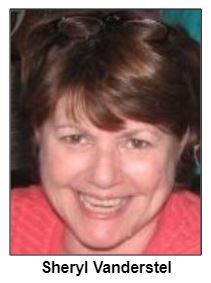
During the first half of the 19th century, the largest meal was eaten at midday and called "dinner," not "lunch." The evening meal, "supper," was much lighter.
Except for the spoon, Sheryl says the pioneers' dining utensils "looked much different."
In addition to explaining the utensils used by the pioneers, she will describe Jerusalem artichokes, salsify, pattypans and other food items that fell into obscurity when subsequent generations did not consume them and forgot about them. Sheryl notes, however, that some of the lost foods "are being rediscovered by foodies today."
Topics of conversation at our historical feast will include technical questions as well, such as how pioneers preserved milk and eggs.
Sheryl Vanderstel, a board member of the Irvington Historical Society, was among the guests on a Hoosier History Live show in 2013 that explored the life of Alexander Ralston, the surveyor who platted Indianapolis in 1821. In addition to researching food history, Sheryl has spent years researching Ralston, who was born in Scotland and helped plan Washington D.C. before coming to the Indiana wilderness.
A native Hoosier, Sheryl is a former assistant director of education at Conner Prairie Interactive History Park, where her duties included overseeing hearthside dinners and other food programs. Since then, she has been involved in food programming at other historic sites and museums as well as educational seminars about historic foods.
Roadtrip: Gus Grissom sites in Mitchell, Indiana

Grissom was one of the original seven Mercury astronauts. Along with other crew members, he perished in a tragic fire during a test of the Apollo 1 spacecraft on January 27, 1967.
The town of Mitchell has made sure that Grissom's accomplishments and contributions to the American space program are not forgotten, with three sites honoring him in the community.
First on our stop, Ray suggests the Grissom Memorial at Spring Mill State Park, which includes items from the astronaut's space career, including the Gemini 3 spacecraft. He and his crewmate nicknamed the capsule "The Unsinkable Molly Brown," hoping to avoid the accident that occurred on Grissom's Mercury flight aboard the "Liberty Bell 7."
Back in the town of Mitchell, on the site of Grissom's former elementary school at 407 Sixth St, a 44-foot-tall rocket monument honors the fallen astronaut and gives details about his life.
And finally, Ray says be sure not to miss the Gus Grissom Boyhood Home , located at 715 West Grissom Ave. The simple, white bungalow now contains many items that belonged to the Grissom family.
Ray is the author of the book Gus Grissom: the Lost Astronaut.
History Mystery
Several towns and counties across Indiana celebrate food items with popular festivals. The Persimmon Festival is the largest annual event in the town of Mitchell in southern Indiana. In Frankfort, residents host a Hot Dog Festival. Tipton County is known for its Pork Festival every September.
Also in September, a county in northern Indiana hosts a four-day Blueberry Festival. Events include a blueberry stomp.
Question: What is the county that hosts a blueberry festival?
The call-in number is (317) 788-3314. Please do not call in to the show until you hear Nelson pose the question on the air, and please do not try to win the prize if you have won any other prize on WICR during the last two months. You must be willing to give your name and address to our engineer and be willing to be placed on the air.
The prizes this week are two tickets to the Seiberling Mansion and a gift certificate to Windmill Grill, both in Kokomo, courtesy of the Howard County Historical Society and Peggy Hollingsworth.
Working hard to keep history alive
Notice how Hoosier History Live's small but mighty crew hasn't let up in these uncertain times? Great shows every week, an informative weekly newsletter, regular podcasts, continuing social media presence and more. It's all part of what we do to bring the rich history of the Hoosier state to life for our audience.
How do we do it? Hard work and dedication to doing things well.
If you appreciate all that Hoosier History Live is doing to educate, enliven, and elevate the public discourse in Indiana, please consider making a contribution by clicking here or on the yellow "Donate" button below. This great content just doesn’t just "fall out of the sky." It represents hours and hours of work each week, not to mention our increasing tech costs.
And finally, a big thanks to WICR for providing the dedicated student engineers who allow us to broadcast live on Saturdays at noon. Even during these times of "social distancing" and "shelter in place," these hard-working UIndy students keep important information and ideas flowing over the airwaves.
Nelson Price, host and historian
Molly Head, producer/general manager, (317) 927-9101
Michael Armbruster, associate producer
Cheryl Lamb, administrative manager
Richard Sullivan, senior tech consultant
Pam Fraizer, graphic designer
Garry Chilluffo, consultant
Please tell our sponsors that you appreciate their support!

 For organizational sponsorship, which includes logos, links, and voiced credits in the show and in podcasts, contact producer Molly Head at (317) 927-9101 or email her at molly@hoosierhistorylive.org. Our podcast listens are increasing at a rate of 17% a month!
For organizational sponsorship, which includes logos, links, and voiced credits in the show and in podcasts, contact producer Molly Head at (317) 927-9101 or email her at molly@hoosierhistorylive.org. Our podcast listens are increasing at a rate of 17% a month!
Acknowledgments to Visit Indy, Fraizer Designs, WICR-FM, Henri Pensis, Aaron Duvall, Chloe Tyson, and many other individuals and organizations.
Thank you!
We'd like to thank the following recent, new and renewal contributors whose donations help make this show possible!
- Robin Winston
- Peggy Hollingsworth
- Kathleen Angelone
- Jill Lough Chambers
- Jinsie Bingham
- Bruce and Julie Buchanan
- Jane Simon Ammeson
- Chuck and Karen Bragg
- Theresa and Dave Berghoff
- Dr. William McNiece
- Ann Frick
- Margaret Smith
- Carl and Kathleen Widland
April 18, 2020 - coming up
Epidemics in Indiana history: encore
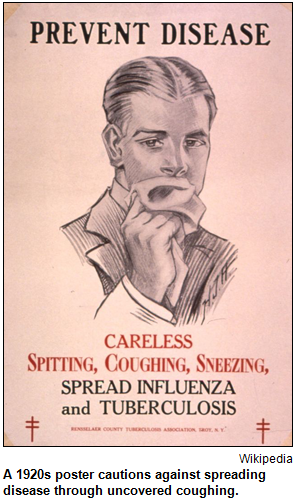 Does history offer any lessons in taking on the challenges of a viral threat? To explore this topic that never has been more timely, Hoosier History Live will air our Epidemics in Indiana history show that originally was broadcast in 2014 amid widespread concern about Ebola and the possibility of an epidemic in this country.
Does history offer any lessons in taking on the challenges of a viral threat? To explore this topic that never has been more timely, Hoosier History Live will air our Epidemics in Indiana history show that originally was broadcast in 2014 amid widespread concern about Ebola and the possibility of an epidemic in this country.
Did you know a malaria epidemic swept Indianapolis just as the Hoosier capital was getting under way in the 1820s? Some doctors blamed the epidemic on the swamps and marshland that were on the new city's site, chosen because of its central location.
During this show, Nelson and his guests, two medical historians, explore the impact of that early epidemic, plus others that affected not only Indiana, but places far beyond our borders.
The influenza epidemic of 1918, a cholera epidemic of the mid-1800s, the polio scare that prevailed for most of the first half of the 20th century and the AIDS epidemic that caused panic during the 1980s and '90s are among the crises we examine during this show.
We also look into the devastating impact of tuberculosis during the late 1800 and early 1900s - even though "epidemic" may not be the most accurate term to describe the widespread TB cases (tune in to the show for an explanation).
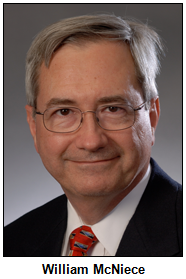
And we explore episodes of panic over potential epidemics, including a swine flu scare in 1976, when a vaccination program encountered various public relations problems. Fears of an epidemic proved unfounded.
Nelson is joined in studio by:
- Dr. William McNiece, president of the Marion County Historical Society. Dr. McNiece is an anesthesiologist at IU Health's Riley Hospital for Children.
- Bill Beck, an author and historian who has written dozens of business and institutional history books, including histories of Indiana hospitals. The founder of Lakeside Writers' Group, he is treasurer of the Marion County Historical Society.
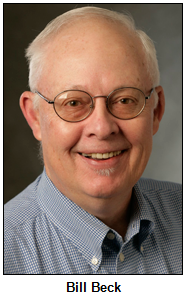 In July 2009. Bill Beck was a Hoosier History Live guest for a show about the 1918 influenza epidemic and its Indiana impact. In July 2012, we explored various aspects of the polio epidemic, including the involvement of Eli Lilly & Co. in distributing the polio vaccine during the 1950s.
In July 2009. Bill Beck was a Hoosier History Live guest for a show about the 1918 influenza epidemic and its Indiana impact. In July 2012, we explored various aspects of the polio epidemic, including the involvement of Eli Lilly & Co. in distributing the polio vaccine during the 1950s.
In many Indiana towns, outbreaks of cholera during the 1830s, '40s and subsequent decades caused extreme panic.
Take the town of Aurora on the Ohio River, which had a population of 2,000 in 1849. Fourteen deaths from cholera were reported in one day, according to a historical account supplied by Dr. McNiece, an associate professor at the IU School of Medicine. During the next three weeks in 1849, 51 other victims died in Aurora. As a result, 1,600 of the 2,000 residents fled the town.
Also in 1849, the town of Madison reacted to outbreaks of cholera by creating a board of health with the power to quarantine residents and to impose fines on people who brought the disease into the city.
Decades before that, a malaria epidemic swept Indianapolis in 1821 just as the brand-new city was being developed on lowlands and swamps.
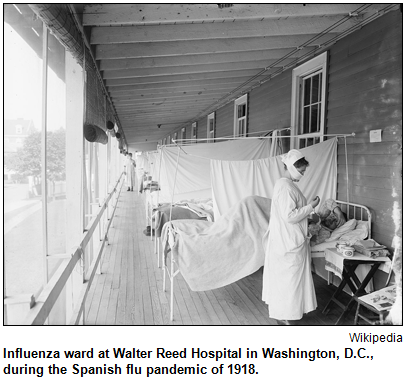 A burial site for pioneers who were victims of the epidemic was called Plague Cemetery; it was located on the current site of Indiana University-Purdue University at Indianapolis. In recent years, a marker has been installed on the historic Plague Cemetery site - which, ironically, is near a complex of classroom buildings for IU medical students.
A burial site for pioneers who were victims of the epidemic was called Plague Cemetery; it was located on the current site of Indiana University-Purdue University at Indianapolis. In recent years, a marker has been installed on the historic Plague Cemetery site - which, ironically, is near a complex of classroom buildings for IU medical students.
Some of the historic epidemics - including the reactions to AIDS beginning in the early 1980s - have involved widespread misinformation about the ways the diseases and disorders could be transmitted.
Other epidemics, including polio, were brought under control with the development of vaccines.
According to the Indiana Historical Society, the peak years for polio cases in the Hoosier state were 1949 and 1954, with, respectively, 1,147 and 1,448 new cases reported. In 1955, Dr. Jonas Salk developed the polio vaccine.
The 1918 influenza epidemic, which ravaged North America and Europe, is considered to have been the country's worst flu epidemic. It coincided with - then persisted after - World War I. Both of our guests on this show have presented programs about that horrific epidemic at the Indiana Medical History Museum.
Learn more:
- "Black Cholera comes to Central Valley of America in 19th Century"
- Hoosier History Live show, "Polio epidemic during the 1940s and'50s
- Centers for Disease Control and Prevention
- National Archives, The influenza epidemic of 1918.
- Damien Center, Indiana's oldest and largest AIDS service organization
© 2020 Hoosier History Live. All rights reserved.
|






